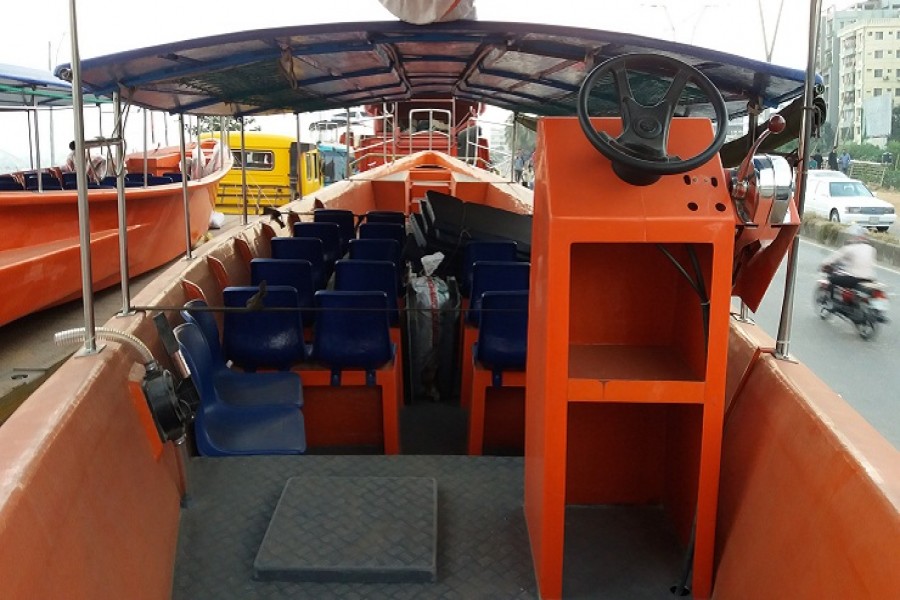The much flaunted water bus service in Dhaka is facing closure. Media reports say it will be shifted to the Kishoreganj 'haor' region. During monsoon, movement of people living on the banks of these vast water bodies becomes difficult. Travel across the 'haors' by country boats and trawlers turns hazardous, with the areas remaining under water during the whole rainy season. Sinking of water vessels and the resultant casualties are common. In such a fraught situation, the spacious launches will surely bring a great relief to the 'haor' people.
Fully operational water bus services ought to have been in place in the 'haor' regions long ago. Now that the people in the Kishoreganj district are going to have motor launches for commuting may spark a rational question: why this belated step? A lot of people have been watching the lackadaisical water bus service in Dhaka. The main route of these transports connected Badamtoli in Old Dhaka's Sadarghat area with Ashulia past greater Mirpur. People may even bring into question the very wisdom and rationale behind the commuting service. The service was introduced by Bangladesh Inland Water Transport Corporation (BIWTC) in 2000; it continued up to 2004 in the first phase. To the disillusionment of the authorities, the service did not take off. Miserably failing to woo passengers, it witnessed unabated fall in regular travellers. Plagued by scores of problems, the water bus service eventually found itself on the verge of closure. In 2018, the over 80-seat transports on days find just one or two passengers on a single trip. For the last few years the water buses have been operating on a shortened route, between Badamtoli and Gabtoli in Mirpur.
Also called 'circular waterway', the launch service on the Dhaka outskirts has been limping since its inception. It should not have taken such a long time for the authorities to realise the futility of the water route. Many of the ground realities were overlooked. They included, among others, loss of navigability of the two rivers on the route, Buriganga and Turag, during dry seasons; river pollution and the resultant stench that makes the trips unpleasant; and the bad condition of the roads to the landing stations. These dampers, urban experts observe, in the main kept people away from the water buses. Lack of publicity has also been singled out by many for the fiasco. That people had not accepted the river route became clear in the very initial years of the service. The authorities failed to decipher the signs.
Many now believe, the water buses were pressed into service without any in-depth study on the preconditions for their passenger acceptability. Ensuring commuter-friendliness and removing the impediments to smooth and speedy movement were blatantly overlooked. The fact that despite spending long hours on being stuck in traffic snarls, the Dhaka people cannot be weaned off road transports has eluded the authorities. It has a lot to do with habitualness. An all-out campaign for the water route could have changed the commuters' mindset to a great extent. It has not happened. What followed was an awfully large drain on public money. As a last-ditch effort, a committee related to the water bus service placed a 12-point recommendation for making it popular and profit-making. Disappointingly, the suggestions were mostly swept under the carpet. The continued losses incurred by the once-ambitious water route might not prick the authorities and the policy makers. Losses due to bad planning are apparently a normal phenomenon in this country. But the funds wisely utilised for a deserving public welfare sector benefit large sections of the people. Now that Dhaka's water buses are headed for Kishoreganj 'haors', it's time to wait and see what happens to the project.


